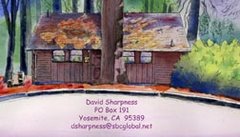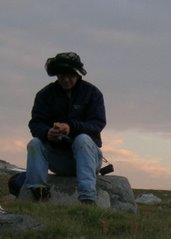
Firefox on...Clint Eastwook swipes the Soviets invisible jet...curious the front does look like the chisled Stealths!....
It's been awhile since I thought of my Ocean Cities...one thought was to contruct them like tinker toys...the dowels would be hollow tubes..and the hubs would be the city...nodes I guess they could be called...but I'm sure the web has ocean city ideas...did before...years ago!...when I was daydreaming this thoughtHobby...brb...took forever for Clint to get in the jet!...
well... a detour...tinkertoys and dna...
quote
It was the sort of realization that demanded a little distance, that needed someone who could look at DNA and see more than the genetic code. Seeman fit the bill. When he first thought of transforming DNA into molecular Tinkertoys, he was in an area of science far removed from genes. He was looking for a way to make crystals.
unquote
brb...
a bit about Mir...the Soviet space station...
quote
The cosmonauts and astronauts who were fortunate enough to travel to Mir were always impressed by its appearance. Regardless, Mir remained difficult to describe. Someone once called Mir a 100-ton Tinker Toy, a term that recalled Mir’s construction. Adding modules over the years, and then sometimes rearranging them, the Russians had built the strangest, biggest structure ever seen in outer space. Traveling at an average speed of 17,885 mph, the space station orbited about 250 miles above the Earth. Mir was both great and graceful—and incongruous and awkward—all at the same time.
In outward appearance, Mir has also been compared to a dragonfly with its wings outstretched, and to a hedgehog whose spines could pierce a spacewalker’s suit. NASA-4 Mir Astronaut Jerry Linenger compared Mir to "six school buses all hooked together. It was as if four of the buses were driven into a four-way intersection at the same time. They collided and became attached. All at right angles to each other, these four buses made up the four Mir science modules. … Priroda and Spektr were relatively new additions … and looked it—each sporting shiny gold foil, bleached-white solar blankets, and unmarred thruster pods. Kvant-2 and Kristall … showed their age. Solar blankets were yellowed … and looked as drab as a Moscow winter and were pockmarked with raggedy holes, the result of losing battles with micrometeorite and debris strikes over the years."
In outward appearance, Mir has also been compared to a dragonfly with its wings outstretched, and to a hedgehog whose spines could pierce a spacewalker’s suit. NASA-4 Mir Astronaut Jerry Linenger compared Mir to "six school buses all hooked together. It was as if four of the buses were driven into a four-way intersection at the same time. They collided and became attached. All at right angles to each other, these four buses made up the four Mir science modules. … Priroda and Spektr were relatively new additions … and looked it—each sporting shiny gold foil, bleached-white solar blankets, and unmarred thruster pods. Kvant-2 and Kristall … showed their age. Solar blankets were yellowed … and looked as drab as a Moscow winter and were pockmarked with raggedy holes, the result of losing battles with micrometeorite and debris strikes over the years."
unquote
brb...
a building materal for the tubes!!
quote
Pliny Fisk III is an Austin-based green architect who discovered that flyash from coal-fired power plants, a troublesome waste product, could be used to make a substance stronger than Portland cement that he dubs "Ashcrete." Fisk developed a building technique that looks like a giant Tinker Toy. His hollow "Green Forms", which provide convenient conduits for plumbing and electrical lines, are made out of rebar (recycled steel) and "ashcrete." Fisk is a master at using local building materials and waste products in order to avoid the use of unsustainably harvested materials that must be shipped over long distance.
brb...
quote
(ICFs) are hollow foam blocks which are stacked into the shape of the exterior walls of a building, reinforced with steel rebar, and then filled with concrete. Insulated concrete forms combine one of the finest insulating materials, Expanded Polystyrene (EPS), with one of the strongest structural building materials, steel reinforced concrete. The result is a wall system of unmatched comfort, energy efficiency, strength and noise reduction.
unquote
brb...
Discovery Channels’ Extreme Engineering explores audacious engineering possibilities. The Extreme Engineering web site provides a view of some of the exciting projects engineers have worked on like the new subways for New York City and Hong Kong’s airport. And it also shows some possible future projects like a transatlantic tunnel (image above) which would float in the ocean and carry trains, pipelines…. Trains could run in a vacuum and travel at 6-8,000 kph (taking under an hour to travel from New York City to London. Of course there are quite a few engineering and economic factors to deal with to make something like that a reality.
unquote
Well...there's the tubes!...and same site has what I picked up a few posts back..
quote
Ocean thermal power plants, which generate electricity from the temperature difference between the tropics’ warm surface water and deep cold water, could be built on land in several hundred areas around the globe’s equatorial zones and also could be constructed as floating plants.…A recent Electric Power Research Institute study found sites in Maine, Alaska, California and Washington that had good potential for tidal power generation with production costs ranging from 4.2 cents per kilowatt hour to 10.8 cents. By comparison, the average retail cost of electricity to U.S. consumers in May was 8.64 cents per kilowatt hour.
unquote
pic is from wikipedia and search for: pyramid city tokyo
The Japanese seem to be ahead in the looking for innovative cities...and I recall they were building on the ocean.
Aside space for ornamental plants, pets, zoo, these plans dont seem to include farms...or wild places for Nature.
And they dont look like my plans...which I'll have to rework from my old ones!...I'll try to find time tomorrow to do some photoshop drawings....
But the thing to keep in mind is that three fifths of the world is covered by water...much of the land...like the Sahara...is desert...there's underground...visit Fresno's underground gardens!....and yet fewer and fewer can find room or means for a h0me....and agriculture cant get enough water...and wetlands are being depleted.
There are countless futurists sights about colonizing space...terraforming distant planets...there are places close by waiting for "colonization"...and much more easily 'terraformed' then say...Mars...which is very red in the night sky of late!
DavidDavid
Tree in the Door



No comments:
Post a Comment